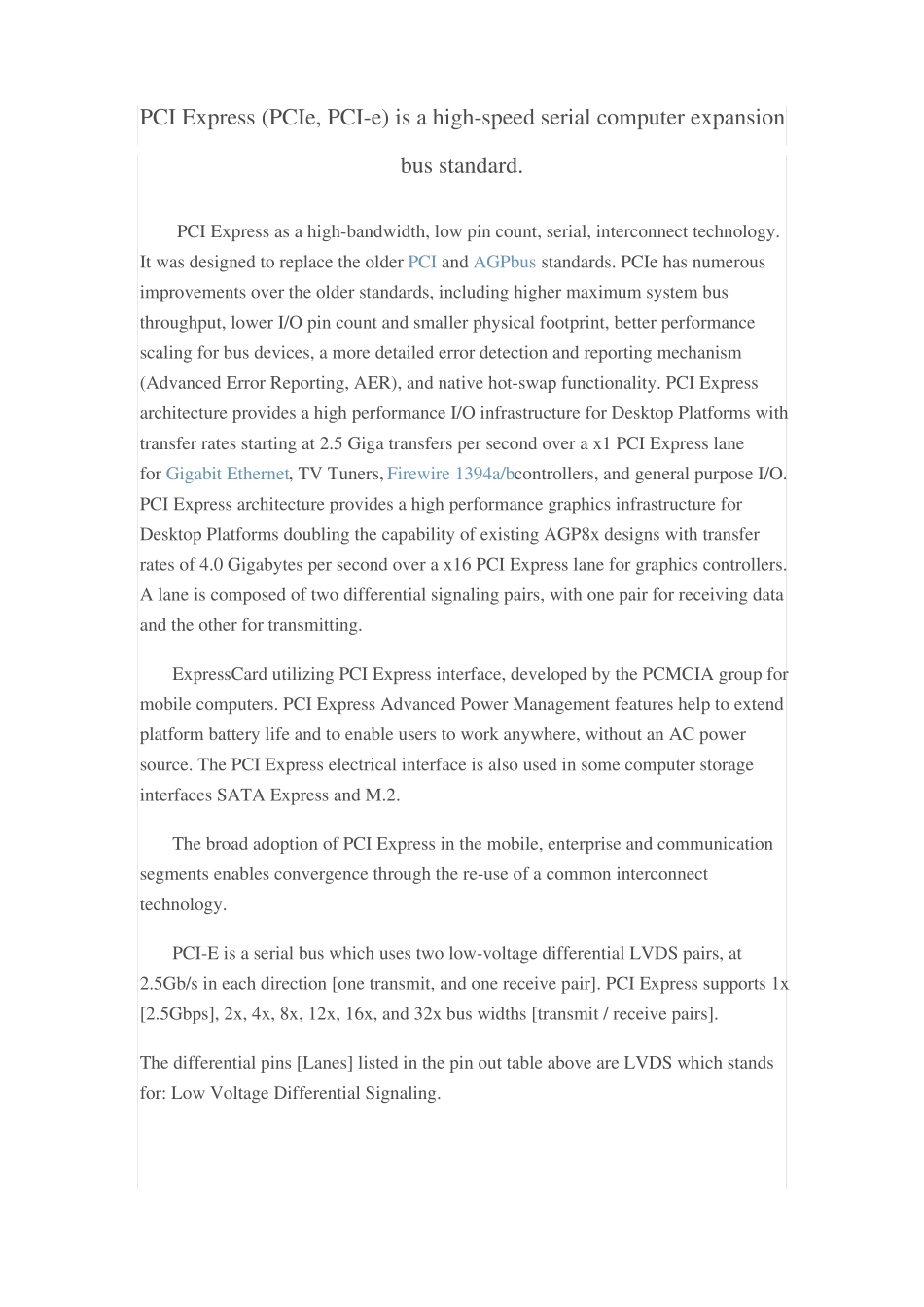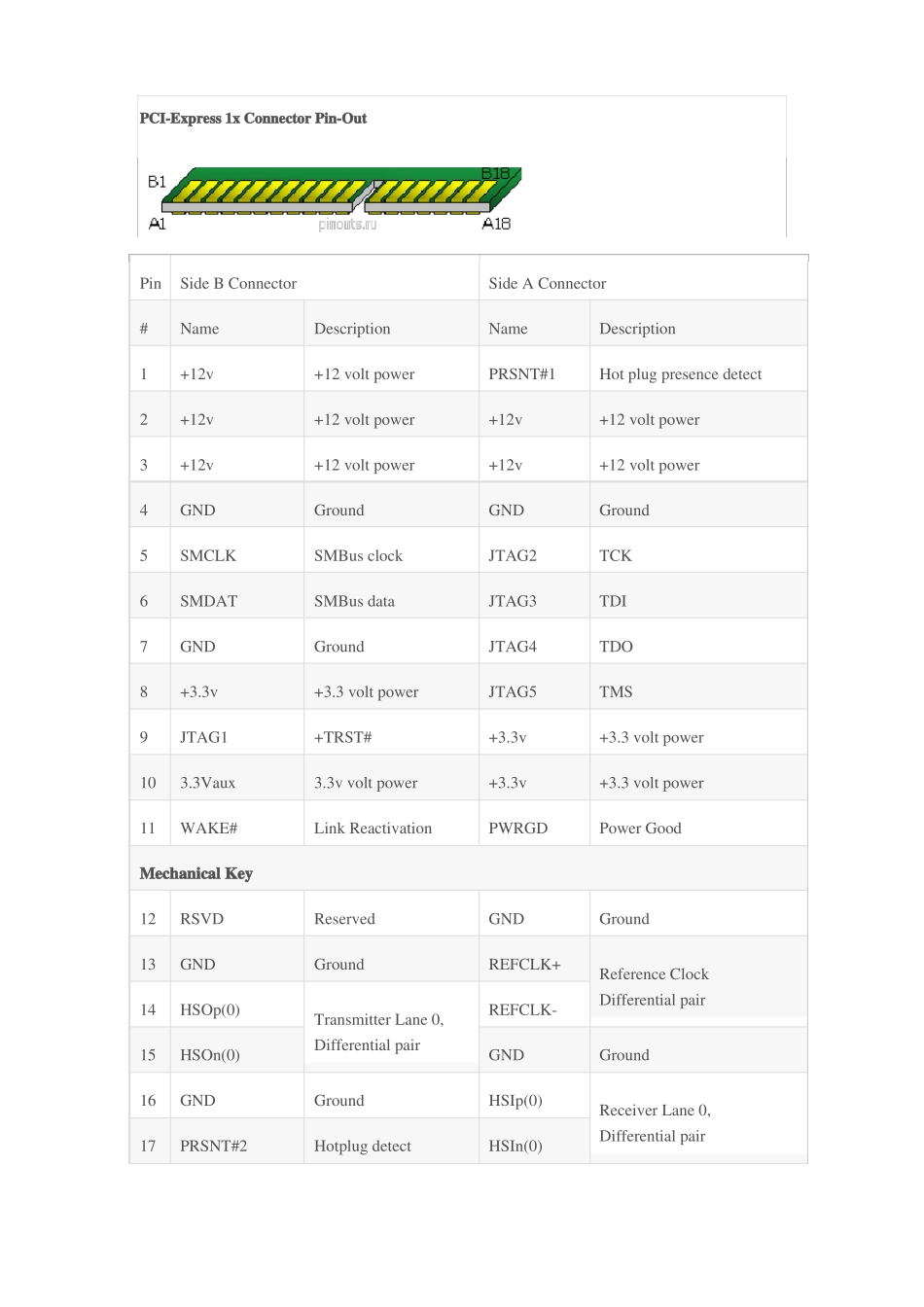PCI Express (PCIe, PCI-e) is a high-speed serial computer expansionbus standard. PCI Express as a high-bandwidth, low pin count, serial, interconnect technology.It was designed to replace the older PCI and AGPbus standards. PCIe has numerousimprovements over the older standards, including higher maximum system busthroughput, lower I/O pin count and smaller physical footprint, better performancescaling for bus devices, a more detailed error detection and reporting mechanism(Advanced Error Reporting, AER), and native hot-swap functionality. PCI Expressarchitecture provides a high performance I/O infrastructure for Desktop Platforms withtransfer rates starting at 2.5 Giga transfers per second over a x1 PCI Express lanefor Gigabit Ethernet, TV Tuners, Firewire 1394a/bcontrollers, and general purpose I/O.PCI Express architecture provides a high performance graphics infrastructure forDesktop Platforms doubling the capability of existing AGP8x designs with transferrates of 4.0 Gigabytes per second over a x16 PCI Express lane for graphics controllers.A lane is composed of two differential signaling pairs, with one pair for receiving dataand the other for transmitting.ExpressCard utilizing PCI Express interface, developed by the PCMCIA group formobile computers. PCI Express Advanced Power Management features help to extendplatform battery life and to enable users to work anywhere, without an AC powersource. The PCI Express electrical interface is also used in some computer storageinterfaces SATA Express and M.2.The broad adoption of PCI Express in the mobile, enterprise and communicationsegments enables convergence through the re-use of a common interconnecttechnology.PCI-E is a serial bus which uses two low-voltage differential LVDS pair...


